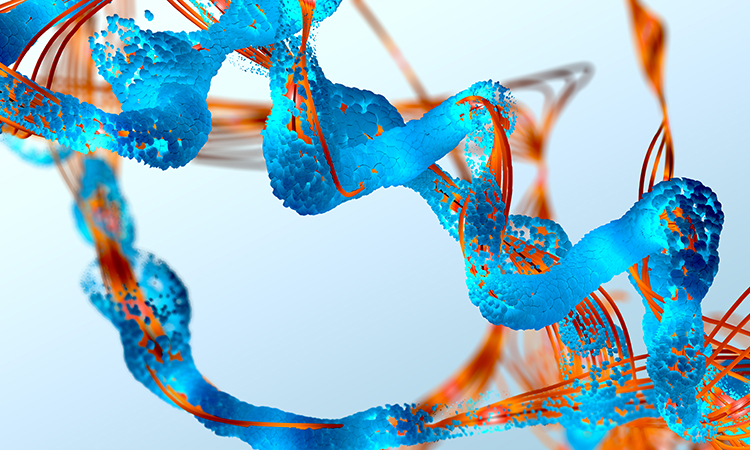Targeted protein degradation: turning undruggable targets into druggable targets
Posted: 6 July 2023 | Izzy Wood (Drug Target Review) | No comments yet
Targeted protein degradation (TPD) is a cutting-edge approach in drug discovery that offers a more precise and efficient way to alter cellular pathways, offering the capability to convert ‘undruggable targets’ into ‘druggable targets.’ In this article, Drug Target Review’s Izzy Wood interviewed Astellas’ Masahiko Hayakawa, Head of Targeted Protein Degradation, and Yoshitsugu Shitaka, Chief Scientific Officer, about investing in TPD, one of Astellas’ primary focus areas, to advance drug discovery and development.

TPD is a rapidly evolving therapeutic modality to degrade a disease-causing proteins, thereby eliminating their function specifically.1 TPD is expected to challenge undruggable proteins, which are highly difficult to target by conventional small molecules. Unlike traditional drug discovery, which focuses on inhibiting or activating proteins, TPD offers a more precise and efficient way to alter cellular pathways.1
The concept of TPD was first demonstrated with a heterobifunctional small molecule to degrader a protein of interest in the early 2000s.2 The heterobifunctional molecule induced the proximity of the protein of interest with a ubiquitin ligase, leading to the protein degradation by proteasomes.2 Since then, the technology has been developed with several different strategies.
I spoke to Masahiko Hayakawa, Head of Targeted Protein Degradation at Astellas Pharma, and Yoshitsugu Shitaka, Astellas’ Chief Scientific Officer, about their approach to TPD and their aim of drugging the undruggable.
How does TPD work?
Undruggable targets are proteins or molecules that are difficult to target with traditional drug discovery methods. These molecules often lack a well-defined active site or have complex structures that make them difficult to bind with small molecules.3
I believe there will be a day when the term undruggable does not exist.”
Using TPD to make undruggable targets druggable involves the use of small molecules known as proteolysis-targeting chimeras (PROTACs) to selectively degrade specific proteins within a cell, resulting in the modulation of downstream signalling pathways.3 Protein-protein interactions (PPIs) also play a crucial role in many cellular processes, and have the same modulation of downstream signalling pathways as TPD.1
Advances in this method present exciting new possibilities in drug discovery, hence why Astellas has invested in TPD as a primary focus area.
In making TPD a new primary focus area last year, Shitaka explained the importance of establishing three things:
- Scientific validity: protein degraders utilise the body’s natural protein degradation process to degrade the target proteins. The scientific validity of this approach was confirmed in-house, which enabled them to establish the TPD technology platform upon which they could continue to generate promising assets.
- Manufacturing and development feasibilities: leveraging Astellas’ proficiency in medicinal chemistry and manufacturing of small molecules, honed over many years, enabled them to progress individual programmes quickly and efficiently, and also enhance their development capability in the oncology space.
- Programme: the leader programme ASP3082 entered the clinical trial phase last year, and multiple forum programmes are currently under investigation in the light research phase.
Advantages of TPD
As Hayakawa explained, among the various modalities against undruggable targets, protein degraders have three main advantages:
- Accessing undruggable targets: proteins that are difficult to target with the conventional small molecule compounds can be targeted because they do not require a deep cavity pocket.
- Penetrating biological barrier: since protein degraders are relatively small in molecular weight, they can penetrate the biological membrane, including the blood-brain barrier and solid tumour cell membrane
- Specificity: proteins are degraded selectively by forming a ternary complex, meaning that protein of interest (POI) is being digested, thus inhibiting its function.
KRAS G12D and development plans for TPD
More than 10 years ago, Astellas began research that aimed to generate a conventional KRAS mutant inhibitor, with the aim to combat some of the deadliest cancer types. It was technically difficult to create binders that binds specifically to KRAS mutants such as G12D, but we identified proprietary KRAS mutant binders based on Astellas’ historical small molecule capabilities.
According to Hayakawa, independently from this inhibitor research, Astellas’ scientists also started protein degrader research in the 2010s. Through this, Astellas built various technologies for drug discovery using this modality.

Combining technologies allowed the researchers to study KRAS G12D degraders. Just five months after this research began, they identified the molecule ASP3082 – selecting it as a promising new candidate.
The ASP3082 discovery facilitated breakthrough proposals and decisions in this innovative environment, resulting in entry into clinical trials in a leghold of just one year from identification of the drug. ASP3082 experienced an expedited R&D process as it was targeting the KRAS G12D mutation.
KRAS G12D
Astellas’ focus was on important targets with huge unmet medical needs. They originally aimed to find inhibitors of KRAS G12D mutants but realised it was more challenging to inhibit the G12D mutation driver function in an effective manner.
G12D has different structural features to other mutants; for example, G12C mutants have cysteine side chain that can afford strong binding, however G12D mutations have no such available moiety, which made it more challenging for G12D inhibitor to potently inhibit tumour growth.
By utilising TPD technology, the Astellas team successfully identified an effective molecule to specifically degrade G12D mutations, resulting in efficacious activity. They tested animal models with G12D mutations and are now testing in humans.
TPD technologies
Various applications are possible using TPD technologies, and converting the binder brings different capabilities.
“If we use the E3 ligase binder as an example,” said Hayakawa, “where there are 600 E3s, including tissue selective ones; utilising those E3s allows us to generate further selectivity and resulting safety.
“As a general direction in the first step, we are going to focus on the KRAS mutant degraders. And in the second step, we will expand to the other oncology targets. In the third step, we will go into non-oncology areas,” he continued.
Undruggable versus druggable targets
As elucidated by Shitaka, it is estimated that about 80 percent of the proteins involved in disease are undruggable targets. TPD represents a highly innovative science and powerful tool to turn undruggable targets into druggable targets and create value for patients.
“I believe there will be a day when the term undruggable does not exist”.
“The goal is to create a novel drug, targeting the important cancer-dependent aberrant proteins that have historically been considered undruggable.”
 Dr Yoshitsugu Shitaka is the Chief Scientific Officer (CScO) at Japan-based pharmaceutical company, Astellas Pharma Inc. Yoshi serves as CScO, where he oversees all internal and external collaborations involving company functions essential to creating innovative medicines to advance Astellas’ Focus Area approach. Yoshi received his BSc, MSc and PhD in Pharmaceutical Sciences from the University of Tokyo and has more than 25 years of experience working in the pharmaceutical industry.
Dr Yoshitsugu Shitaka is the Chief Scientific Officer (CScO) at Japan-based pharmaceutical company, Astellas Pharma Inc. Yoshi serves as CScO, where he oversees all internal and external collaborations involving company functions essential to creating innovative medicines to advance Astellas’ Focus Area approach. Yoshi received his BSc, MSc and PhD in Pharmaceutical Sciences from the University of Tokyo and has more than 25 years of experience working in the pharmaceutical industry.
 Dr Masahiko Hayakawa is Head of Targeted Protein Degradation at Astellas. Masahiko serves as the Vice President, Head of Targeted Protein Degradation, where he leads targeted protein degradation research, including Astellas’ work with ASP3082, the first compound utilising TPD technology to advance to clinical trials for KRAS G12D. Masahiko graduated from Nagoya University’s Faculty of Science, holds a doctorate from Tokyo University of Science and touts more than 25 years of pharmaceutical industry experience.
Dr Masahiko Hayakawa is Head of Targeted Protein Degradation at Astellas. Masahiko serves as the Vice President, Head of Targeted Protein Degradation, where he leads targeted protein degradation research, including Astellas’ work with ASP3082, the first compound utilising TPD technology to advance to clinical trials for KRAS G12D. Masahiko graduated from Nagoya University’s Faculty of Science, holds a doctorate from Tokyo University of Science and touts more than 25 years of pharmaceutical industry experience.
References:
- Békés M, Langley DR, Crews CM. PROTAC targeted protein degraders: The past is prologue [Internet]. Nature News. Nature Publishing Group; 2022 [cited 2023Feb23]. Available from: https://www.nature.com/articles/s41573-021-00371-6
- Sakamoto KM et al. Protacs: Chimeric molecules that target proteins to the Skp1-Cullin-F box complex for ubuquitination and degradation. Proc. Natl Acad. Sci. USA 98, 8554-8559 (2001)
- Zhang G, Zhang J, Gao Y, et al. Strategies for targeting UNDRUGGABLE targets. Expert Opinion on Drug Discovery. 2021;17(1):55–69.
Related topics
Drug Development, Drug Discovery, Drug Targets, Protein, Target Molecule, Target Validation, Targets
Related organisations
Astellas
Related people
Dr Masahiko Hayakawa (Astellas), Dr Yoshitsugu Shitaka (Astellas)







